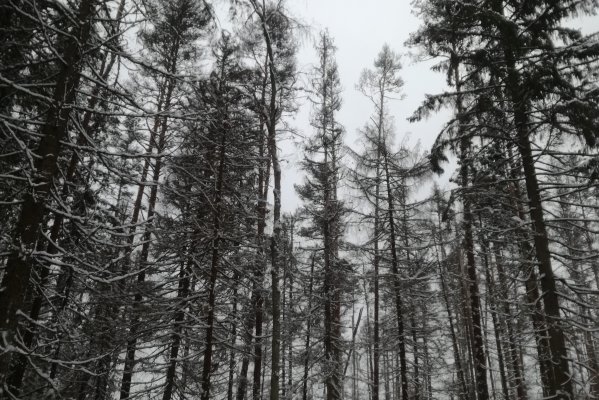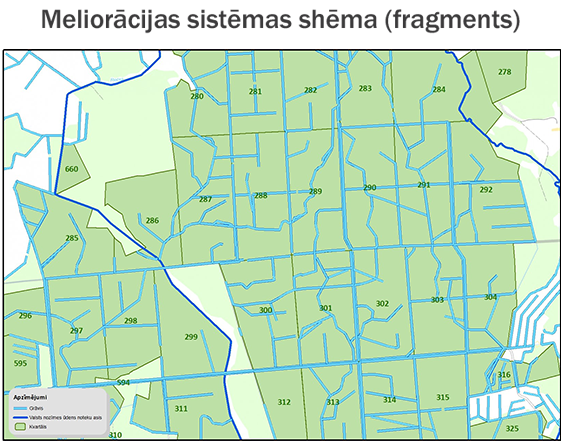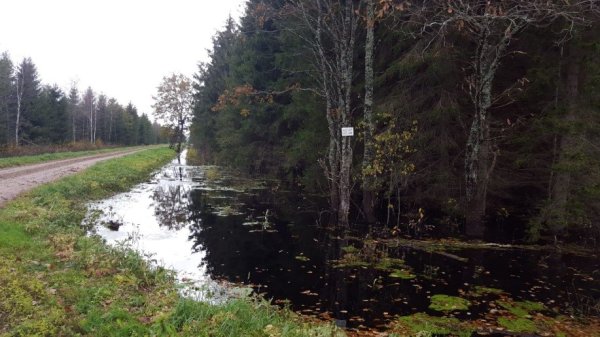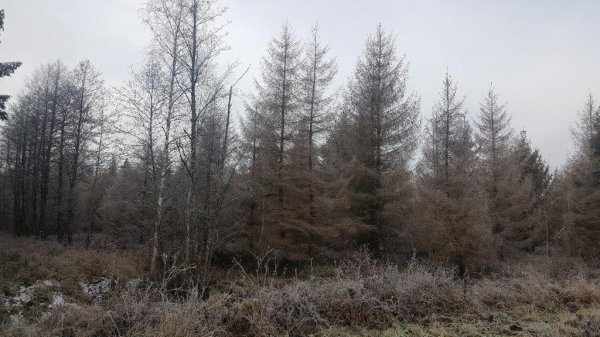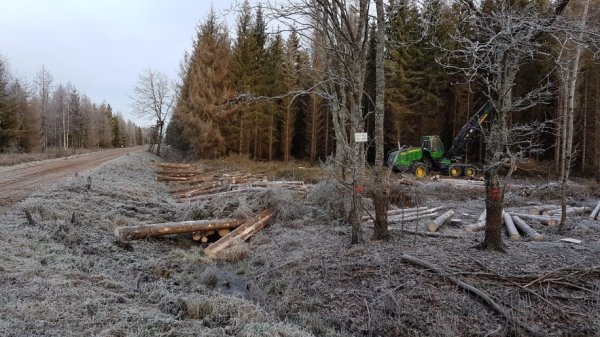LVM Eliminates the Consequences of a Natural Disaster in Latgale
Forest management is a complex set of long-term measures, and certain economic activities can only be seen in forest stands in the next few years, often even after decades. Weather and natural disasters affect the course of management and the quality of forest stands. After prolonged rainfall in 2017, foresters found intense forest stand drying in the affected area in Lubāna Forest District.
Natural disaster in forestry
Data of the Latvian Environment, Geology and Meteorology Centre show that 2017 was the seventh wettest year in the last 94 years and the third wettest year in the 21st century. The second half of the year stood out with exceptionally high rainfall: in September and October it was 313.5 mm or 156% of the monthly rate. It is the second wettest autumn in the history of Latvian observations. Water levels began to decline only at the end of 2017 and early 2018, with long-lasting flooding of tree roots.
In 2017, the Ministry of Agriculture announced a natural disaster situation in the country’s forestry sector, as large forest areas were overflowing and access by machinery for logging was not possible.
Oxygen deprivation
In 2018, intense drying of forests was observed in Lubāna lowland in Latgale - mostly in birch and spruce stands, and to a lesser extent in other tree species.
LVM North Latgale Region Lubāna Forest District rests on peat soils. A dense drainage system has been set up to regulate the water level and ensure its movement. Only running water provides aeration or oxygen access to the roots.
A view of forest block No. 413, where spruce stands were under water in autumn 2017
In the 2017 rainfall, the river flooded and drainage systems were unable to deliver excess water, so the roots of the trees stayed under water for a long time, which weakened the trees and made them unable to resist pest and wind.
"The weakened spruce forest stands are often exposed to the risk of spruce bark beetles, which is the most dangerous pest damaging coniferous tree trunks in Latvia, which can destroy even healthy spruce trees in a short period of time," says Edijs Leišavnieks, LVM Forest Protection and Fire Safety Manager.
Elimination of consequences
In order to provide information about forest damage caused by floods, as well as to find the most effective solution for the elimination of this damage, and to agree on the next steps to be taken, LVM employees organised a seminar, inviting specialists of the Latvian State Forest Research Institute "Silava" and the State Forest Service.
During the meeting, industry experts found that forest stands suffered most damage due to oxygen starvation, and they were also threatened by spruce bark beetles, which is the most dangerous pest damaging coniferous tree trunks in Latvia.
Since the stands are not damaged by windfall and no emergency has been declared, these trees are subject to tree felling in forest land, as provided for in the Forest Law and the applicable Cabinet Regulations. According to this, a decision was made to carry out sanitary clearings in areas where the area of the remaining trees is smaller than the critical area, and to carry out sanitary selective felling in the remaining area. By 31 January, LVM specialists had prepared 980 ha for sanitary felling, of which 98 ha were sanitary thinning and 886 ha - selective felling. The State Forest Service has accepted felling and issued certificates for felling in 411 ha.
A view of forest block No. 413, where sanitary felling was carried out in autumn 2018
During the winter season, LVM employees are organising the development of damaged trees to mitigate the risk of spruce bark beetles in spring 2019. However, in order to limit further spread of spruce pests, it is planned to place pheromone traps in the forest stand that will attract the nearby spruce bark beetles thus protecting middle-aged spruce stands.

